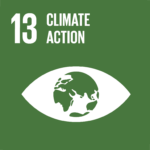Can you guess what percentage of the beverage containers shown on screen in Korean reality TV are single-use plastic?
In an era when the climate crisis headlines global agendas, Korean reality television seems to be at odds with the call for sustainability. According to a new report from Greenpeace East Asia, the ubiquitous presence of single-use plastics on Korean reality shows is sending the wrong message to millions of viewers. With plastic cups, bottles, and other disposable items taking center stage on screen, the report urges Korea’s entertainment industry to embrace a more sustainable approach.
RELEVANT SUSTAINABLE GOALS


Behind the Scenes of Plastic Free TV
Greenpeace East Asia’s study, Plastic Free TV (TV Yongginae), set out to assess the scale of plastic pollution portrayed on reality television. Drawing inspiration from the Plastic Pollution Coalition’s (PPC) “Flip the Script on Plastics” initiative, the study deployed artificial intelligence to scan and analyze 562 episodes from reality programs across Korea’s three major broadcasters—KSC, MBC, and SBS.
The results were startling. In 10 of the 19 shows analyzed, more than 80% of beverage containers visible on screen were single-use plastics. These findings, Greenpeace argues, underscore a larger cultural dependency on disposables in Korea—a message that popular media broadcasts loud and clear.
Beyond the Lens: Reusables as Viable Alternatives
What stands out in the Greenpeace report is not just the high visibility of single-use plastics, but the conclusion that replacing these items with sustainable alternatives is entirely feasible. The study found that, in many scenes, glass, ceramic, and metal containers were used in the same contexts as their plastic and paper counterparts. This raises an important question: Why not shift entirely to reusable options?
The report challenges broadcasters to make this transition. By phasing out single-use items, the programs could avoid setting a precedent that normalizes plastic pollution. Instead, content creators have an opportunity to leverage entertainment’s cultural power to promote sustainable behaviors.
In reality television, product placements often play a major role in funding and sponsorships. It’s no secret that many of the single-use plastics visible on these shows carry the logos of well-known beverage companies. This is where the issue of sustainability gets complicated.
According to the report, advertisers must step up and innovate beyond the single-use plastic model. Rather than highlighting disposable containers, companies could explore advertising models that showcase reusable alternatives and refillable systems. This shift wouldn’t just serve the environment—it would align brands with a growing consumer demand for sustainable practices.
The Global Picture: A Reflection of a Bigger Problem
The Greenpeace East Asia report is part of a broader narrative about the global plastic crisis, echoing findings from PPC’s foundational study, “Flip the Script: Can Hollywood Help Us Imagine a Future Without Plastic?” That 2019-2020 report focused on scripted television in the United States, where single-use plastics were similarly prevalent.
Together, these reports paint a picture of a worldwide media landscape that continues to glamorize and normalize disposable culture. They also highlight the responsibility of content creators to reflect a future that’s mindful of the environment, rather than reinforcing harmful habits.
It’s often said that art imitates life. But in the case of reality TV, art also influences life. Television shapes social norms and behaviors, providing both a reflection of reality and a script for audiences to follow. This is why Greenpeace East Asia’s report is so significant—it’s not just about what’s on screen, but what those images inspire viewers to do in their daily lives.
“Entertainment has the power to influence culture and individuals on a global scale,” the report asserts. And with the global plastic pollution crisis worsening, the stakes have never been higher. From the dazzling lights of Seoul to the movie sets of Los Angeles, media must move beyond outdated portrayals of wasteful habits and embrace a narrative of sustainability.
Lead image courtesy of annastills (Eating Corn Puff Snacks ASMR)
You may also be interested in :
Exposed : Plastic Industry’s Decades – Long Recycling Deception, Report Claims





